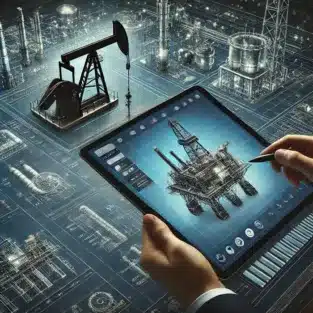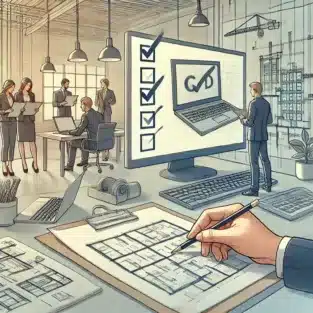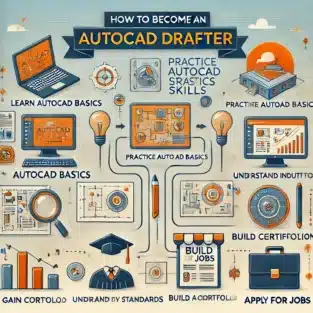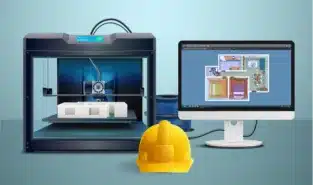The oil and gas industry relies heavily on precise drafting and design to ensure safe and efficient operations. Whether you’re an aspiring drafter or a professional looking to refine your skills, understanding the fundamentals of oil and gas drafting is crucial. This guide will provide an overview of the essential aspects, tools, and best practices to help beginners navigate the complexities of oil and gas drafting and design.
What is Oil & Gas Drafting and Design?
Oil and gas drafting involves creating detailed technical drawings and plans for various facilities, pipelines, refineries, and equipment used in the industry. These drawings serve as a blueprint for engineers, fabricators, and construction teams to execute projects accurately.
Key Components of Oil & Gas Drafting:
- Piping and Instrumentation Diagrams (P&ID): These schematics show the relationships between piping, instruments, and equipment in a facility.
- Process Flow Diagrams (PFD): Illustrates the major equipment and flow of processes in oil and gas plants.
- Structural Drawings: Includes support structures, platforms, and foundations.
- Electrical & Control System Diagrams: Details the electrical circuits and control systems for oil and gas facilities.
- 3D CAD Modeling: Helps in visualizing complex structures and improving accuracy before construction.
Essential Tools for Oil & Gas Drafting
To produce accurate and efficient designs, drafters use various software tools, including:
- AutoCAD – The industry standard for 2D drafting and detailing.
- AVEVA PDMS/E3D – A powerful tool for 3D plant design and modeling.
- Bentley MicroStation – A popular alternative for pipeline and structural drafting.
- SmartPlant – A comprehensive software suite for plant design and management.
Oil & Gas Drafting Tutorials for Beginners
1. Understanding Industry Standards & Codes
Oil and gas drafting must adhere to strict industry codes such as:
- ASME (American Society of Mechanical Engineers) standards for piping and pressure vessels.
- API (American Petroleum Institute) standards for drilling and equipment.
- ISO (International Organization for Standardization) regulations for global consistency.
2. Learning Basic Drafting Principles
- Start with simple sketches before transitioning to detailed CAD designs.
- Focus on accuracy, scale, and dimensioning in drawings.
- Use proper layering and annotation for clarity.
3. Developing 3D Drafting Skills
- Learn how to convert 2D drawings into 3D models.
- Understand clash detection to prevent on-site issues.
- Use 3D visualization tools to enhance design accuracy.
4. Common Mistakes to Avoid
- Neglecting to verify measurements before finalizing drawings.
- Overcomplicating designs with unnecessary details.
- Not following industry standards, leading to project delays and cost overruns.
Oil & Gas Drafting Tips for Beginners
- Stay Updated on Industry Trends: Keep up with new technologies and software advancements.
- Practice Regularly: Work on sample projects to hone your drafting skills.
- Collaborate with Engineers: Understanding engineering requirements will improve the quality of your drawings.
- Use Standard Templates: Save time by using pre-designed templates and symbols.
- Seek Feedback: Learn from experienced professionals to refine your designs.
Conclusion
Oil and gas drafting and design are critical for ensuring safe and efficient operations in the industry. By mastering essential drafting techniques, industry standards, and software tools, beginners can build a strong foundation in this field. With continuous learning and practice, aspiring drafters can contribute effectively to large-scale oil and gas projects.
Start your journey today by exploring oil and gas drafting tutorials and refining your skills with industry-leading software!
1. What qualifications do I need to become an oil & gas drafter?
A diploma or degree in drafting, mechanical engineering, or a related field is helpful. Experience with CAD software is essential.
2. How long does it take to learn oil & gas drafting?
The learning curve varies, but with consistent practice and training, beginners can gain proficiency in 6–12 months.
3. Which software is best for oil & gas drafting?
AutoCAD, AVEVA PDMS, and SmartPlant are widely used in the industry.
4. What is the difference between PFD and P&ID?
A Process Flow Diagram (PFD) provides an overview of major processes, while a Piping and Instrumentation Diagram (P&ID) includes detailed connections and instrumentation.
5. Is 3D drafting necessary for oil & gas design?
Yes, 3D drafting helps identify potential design issues and improves project accuracy before construction.









